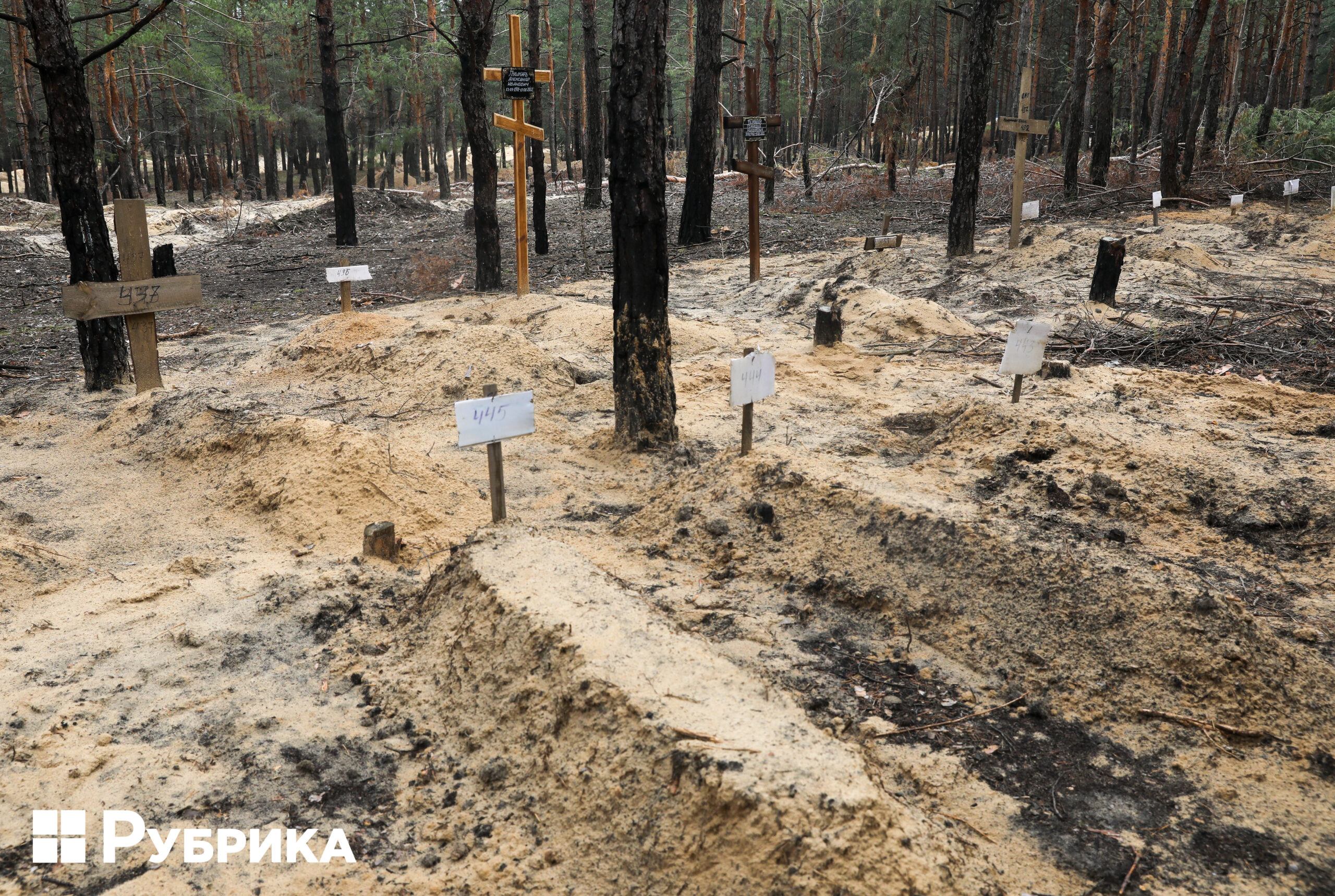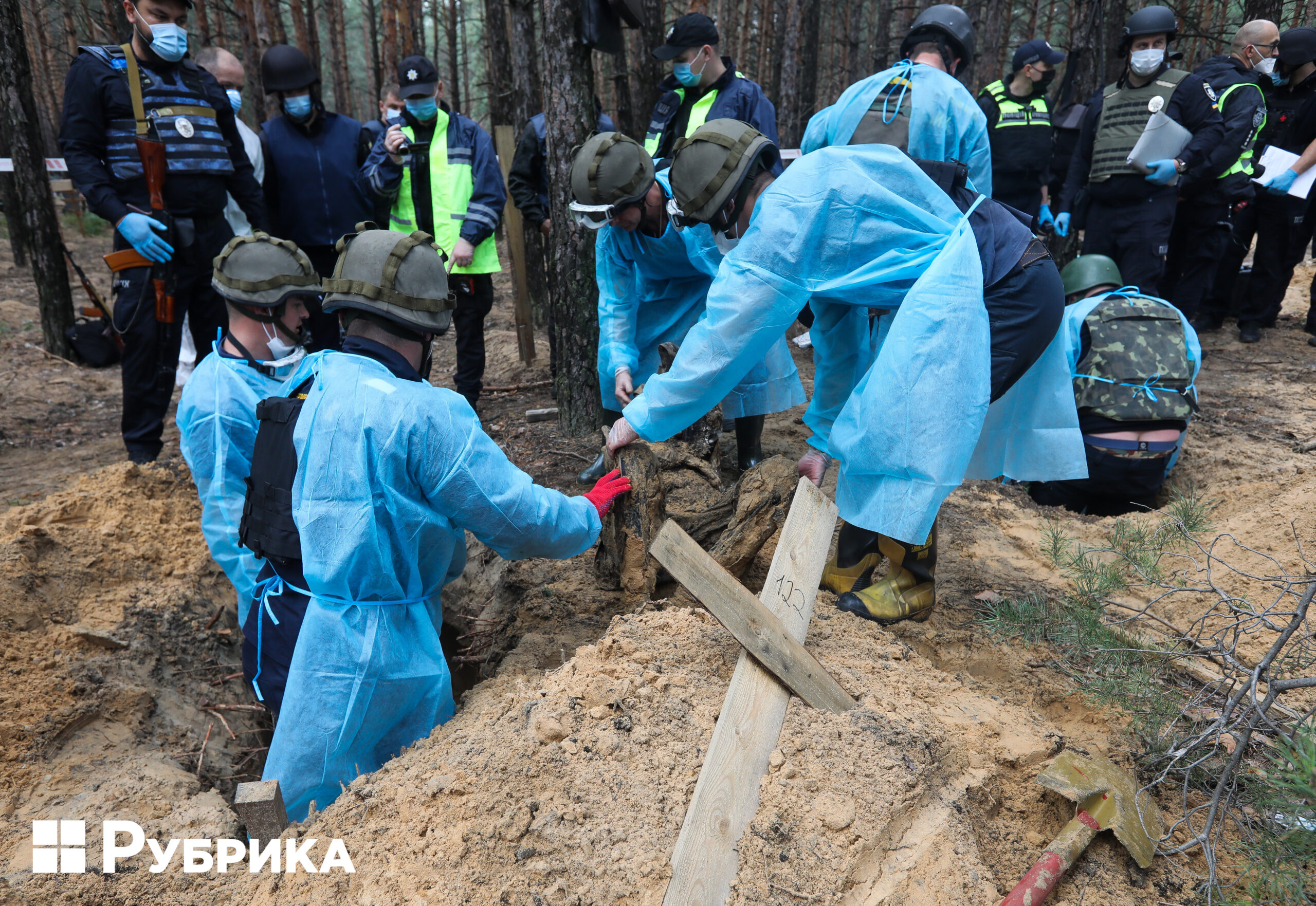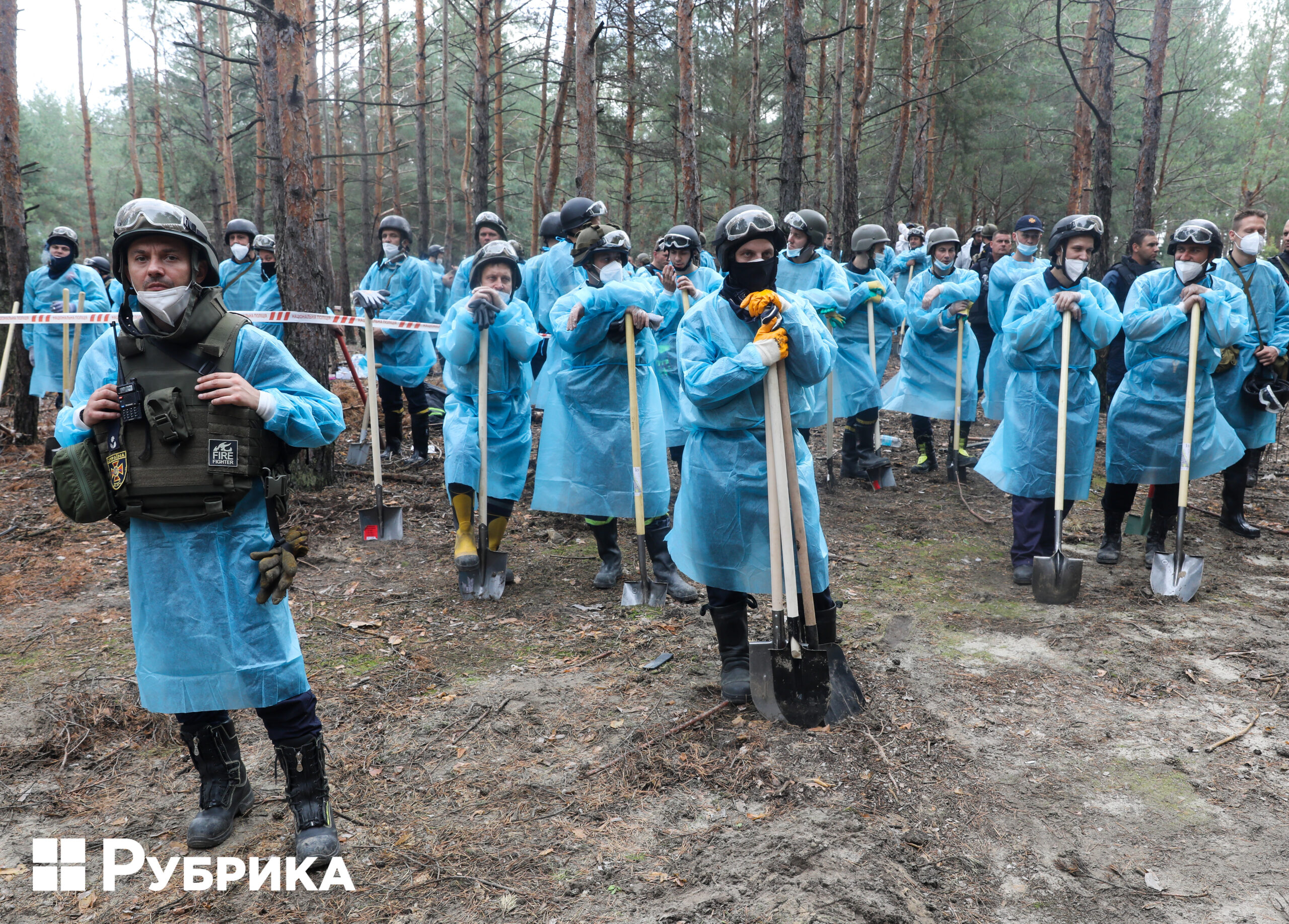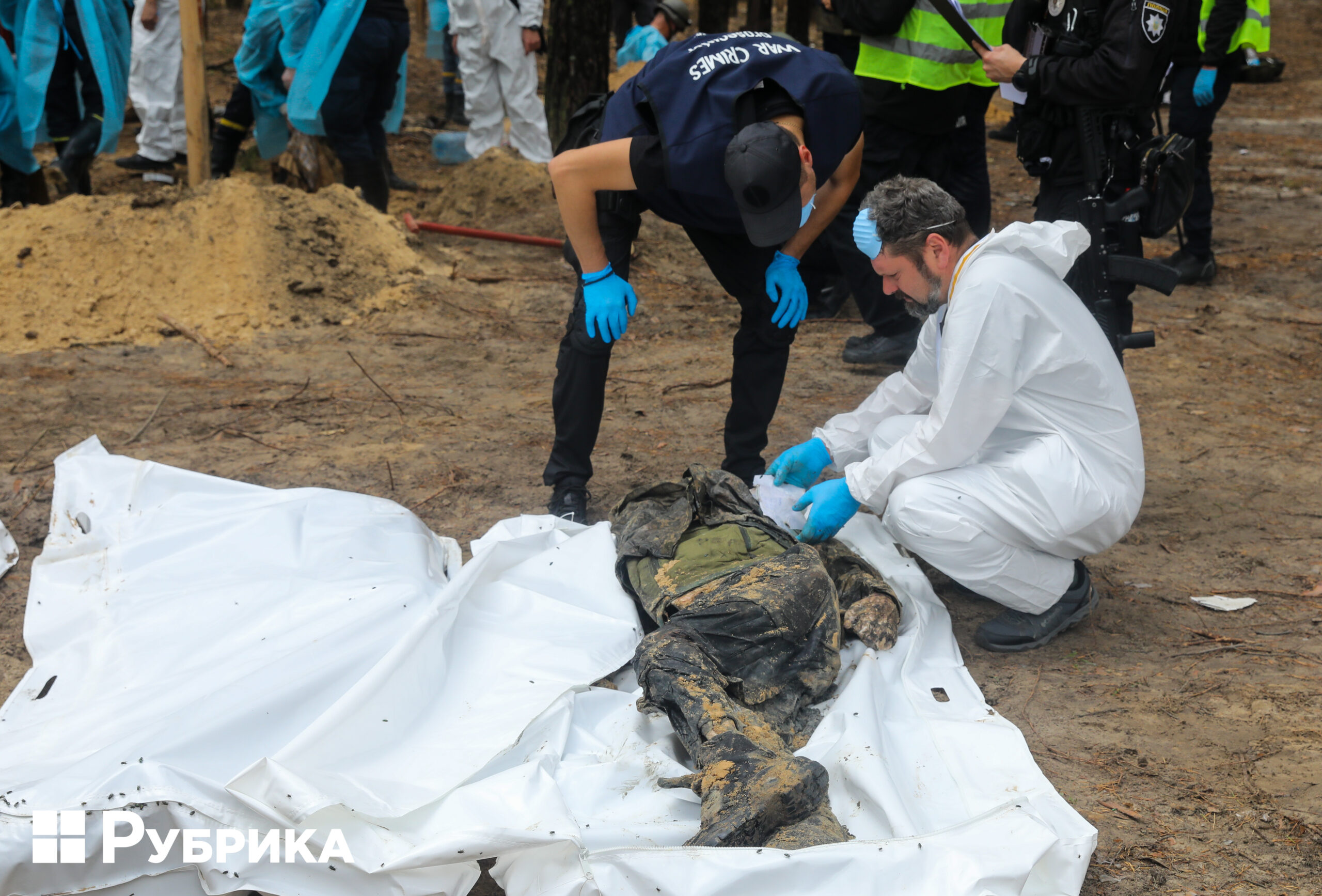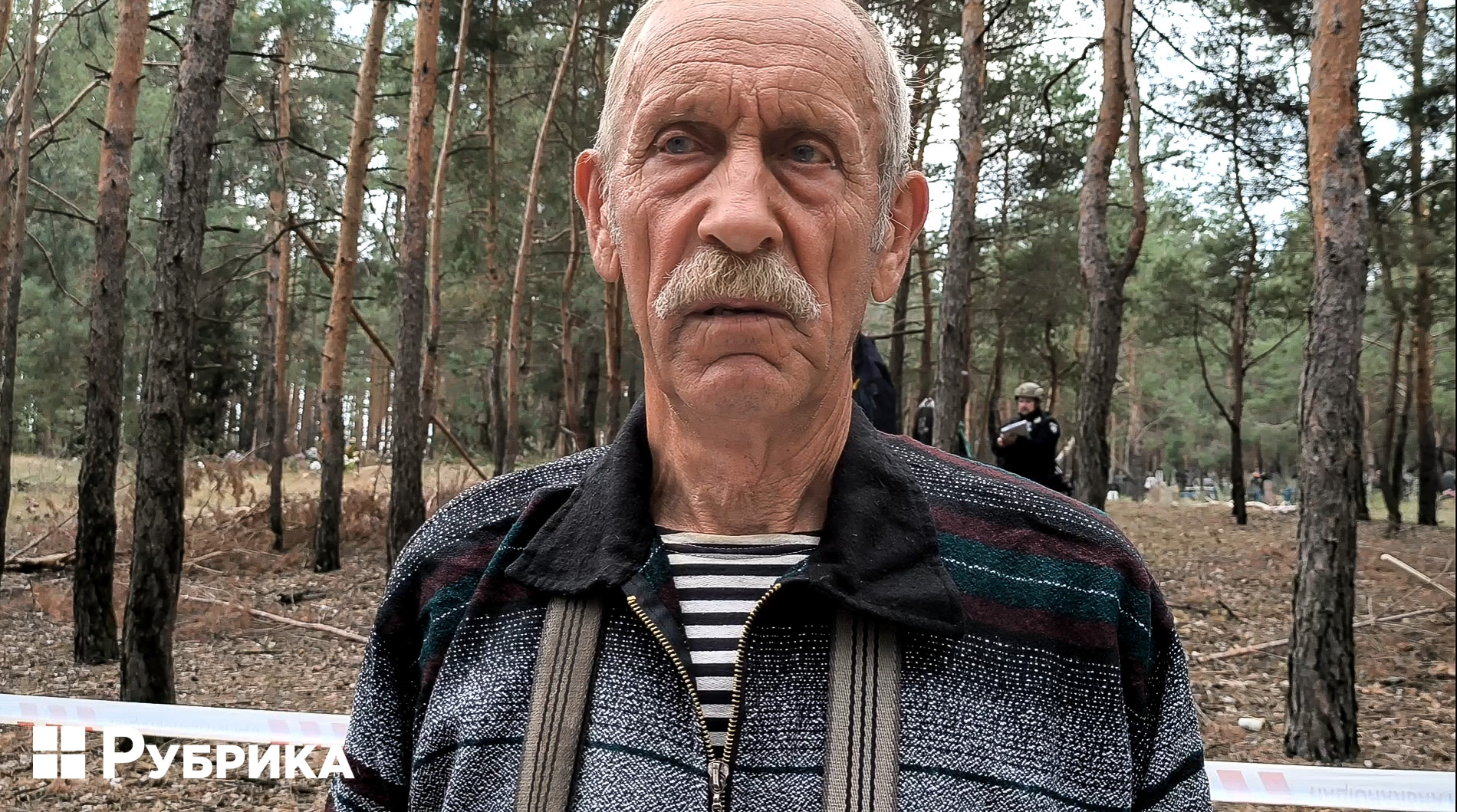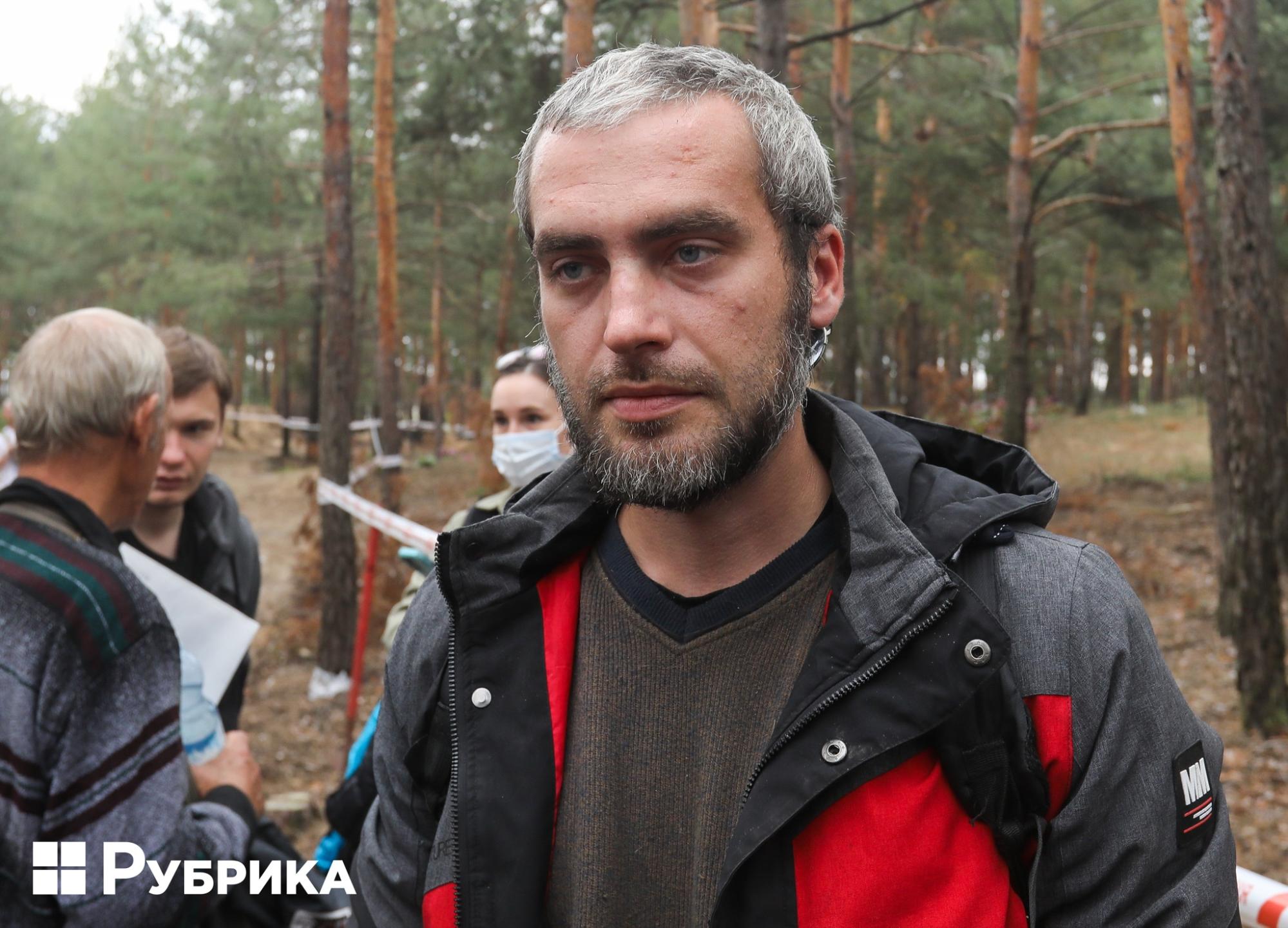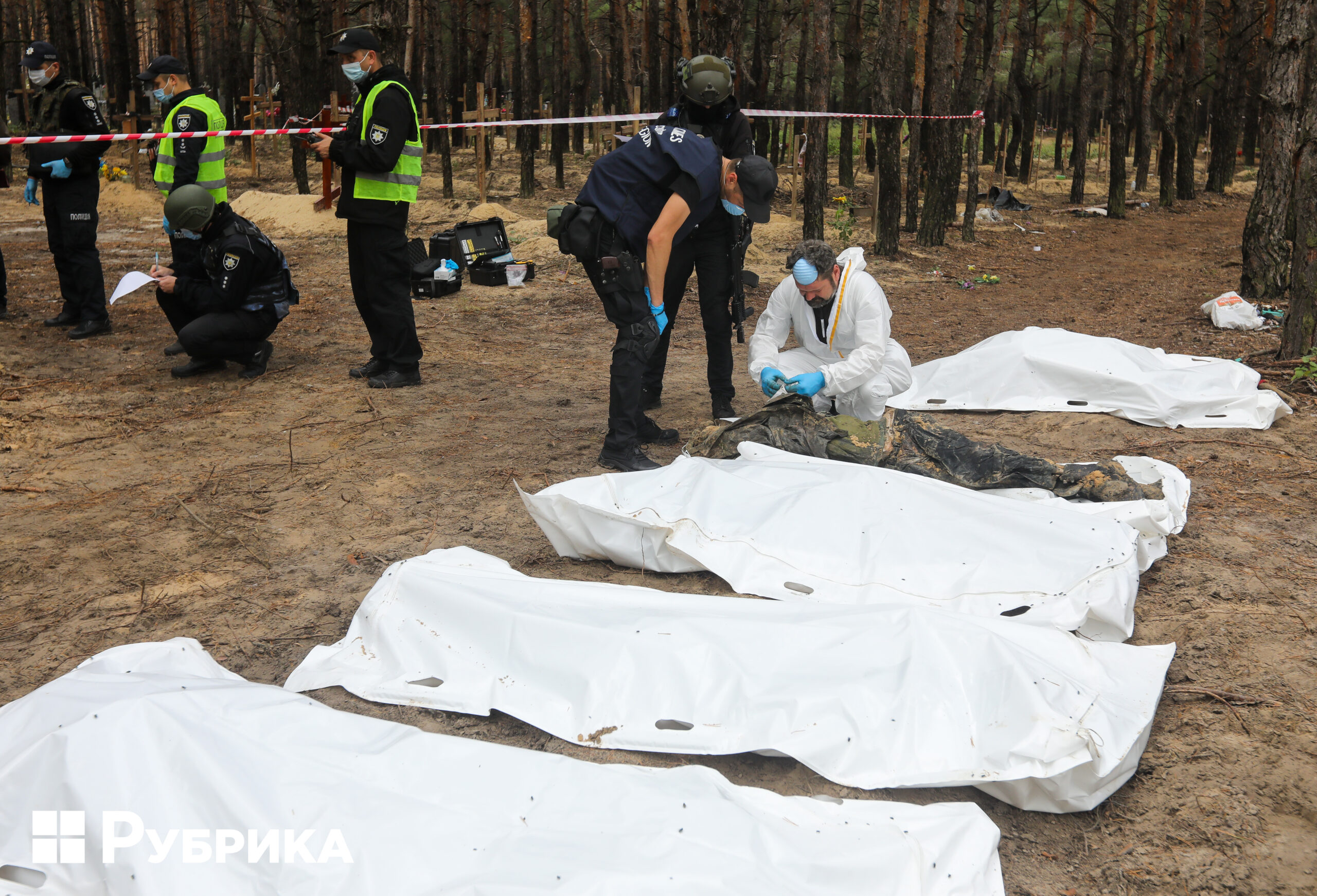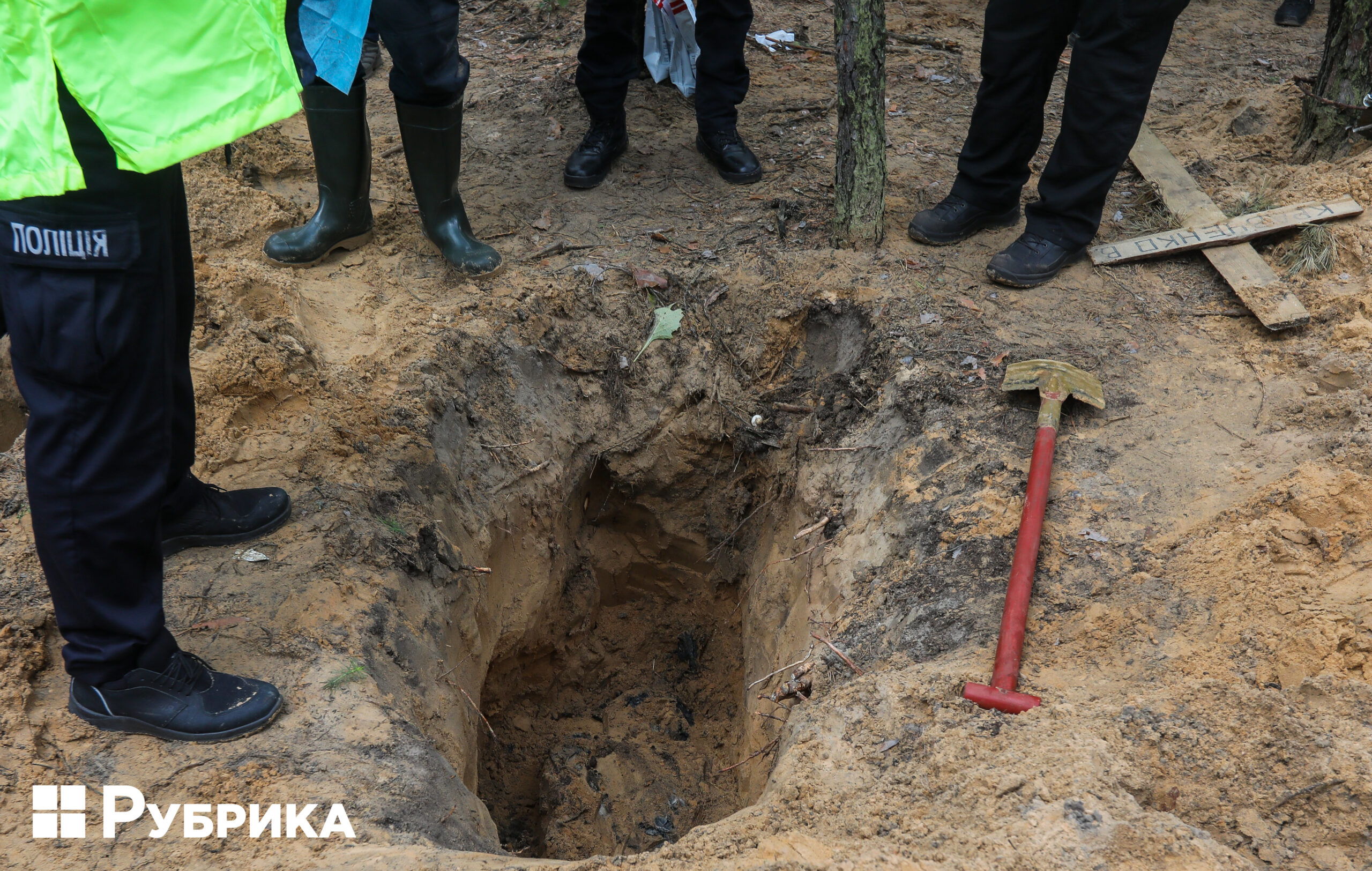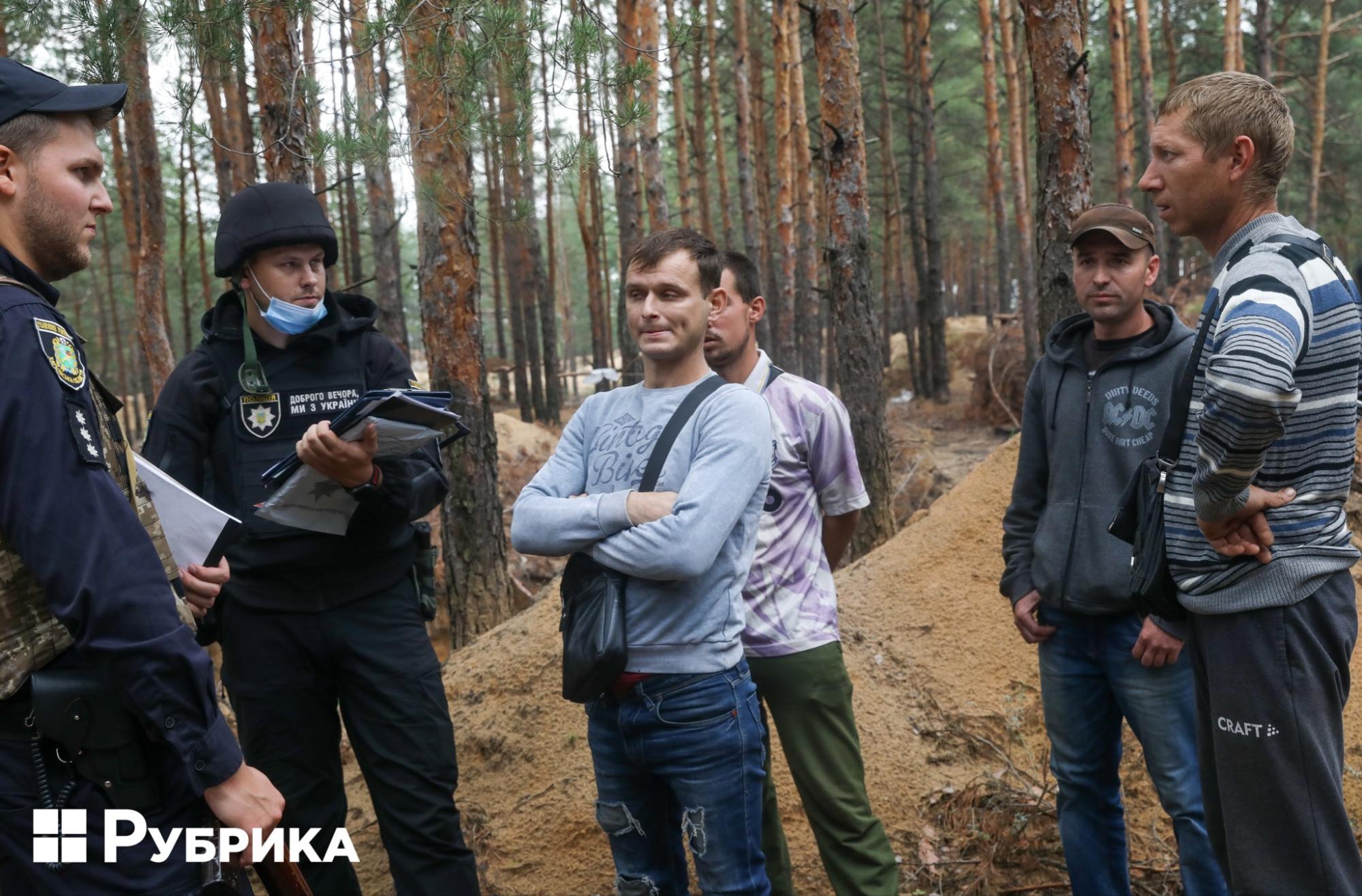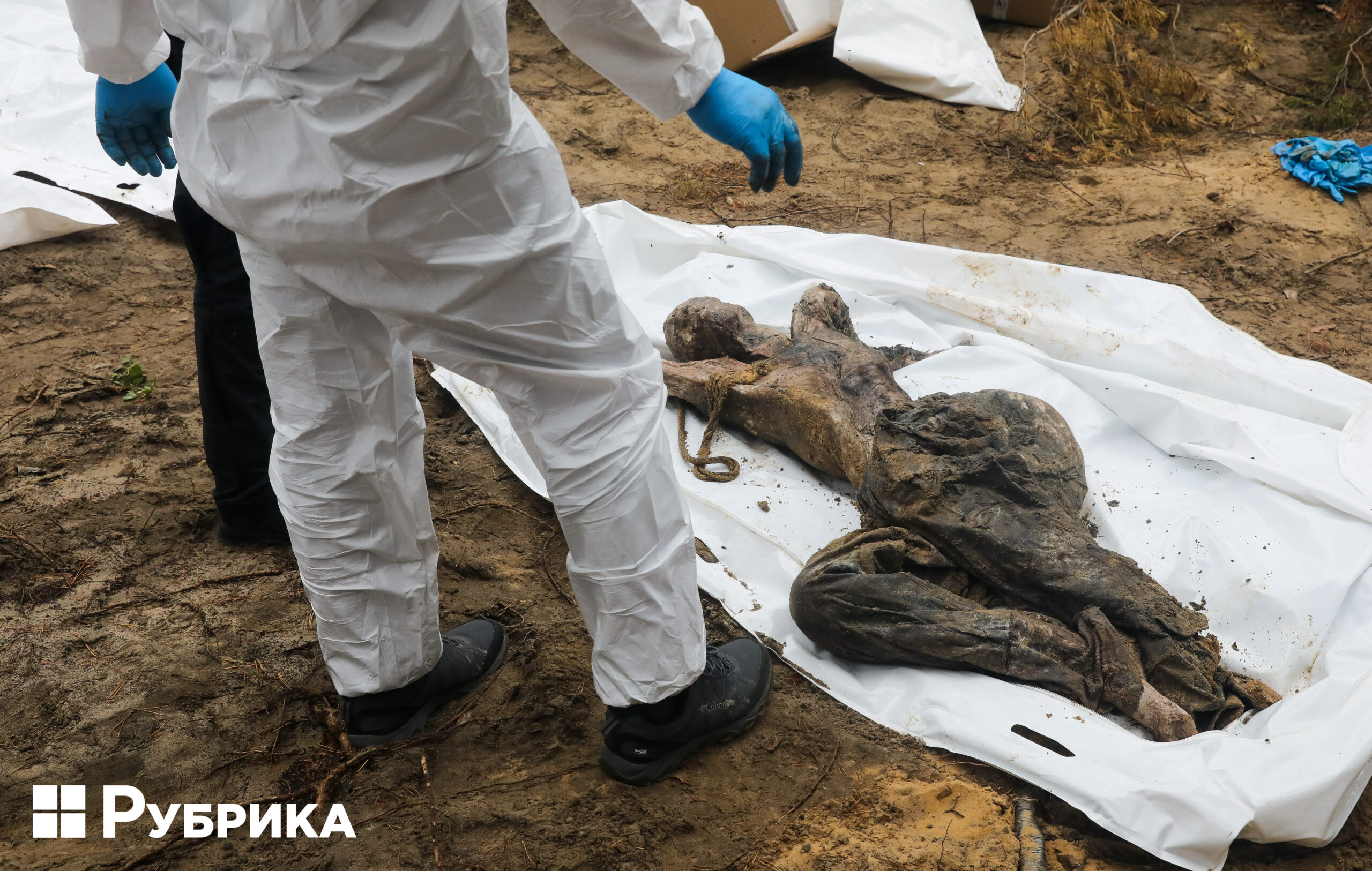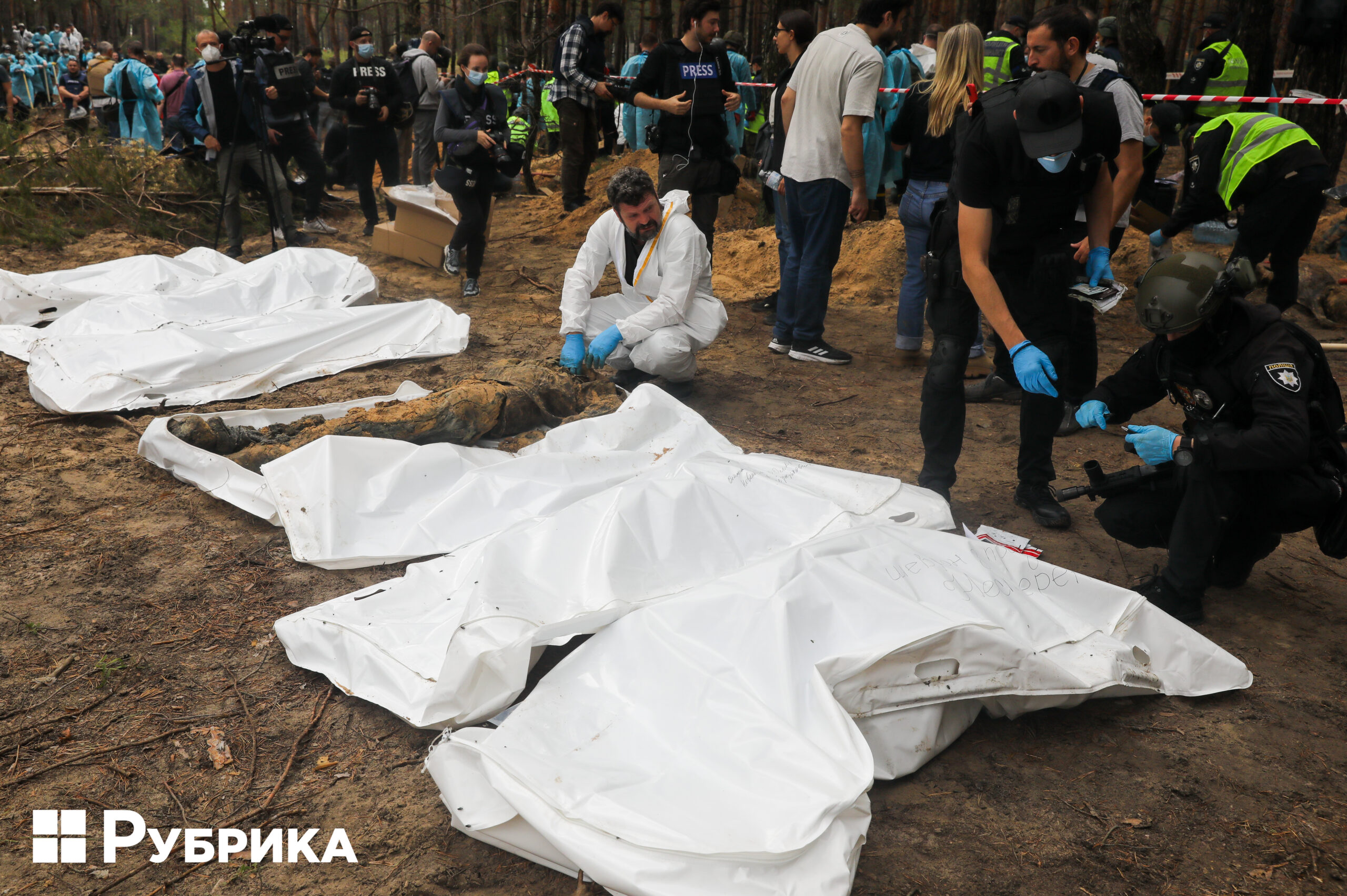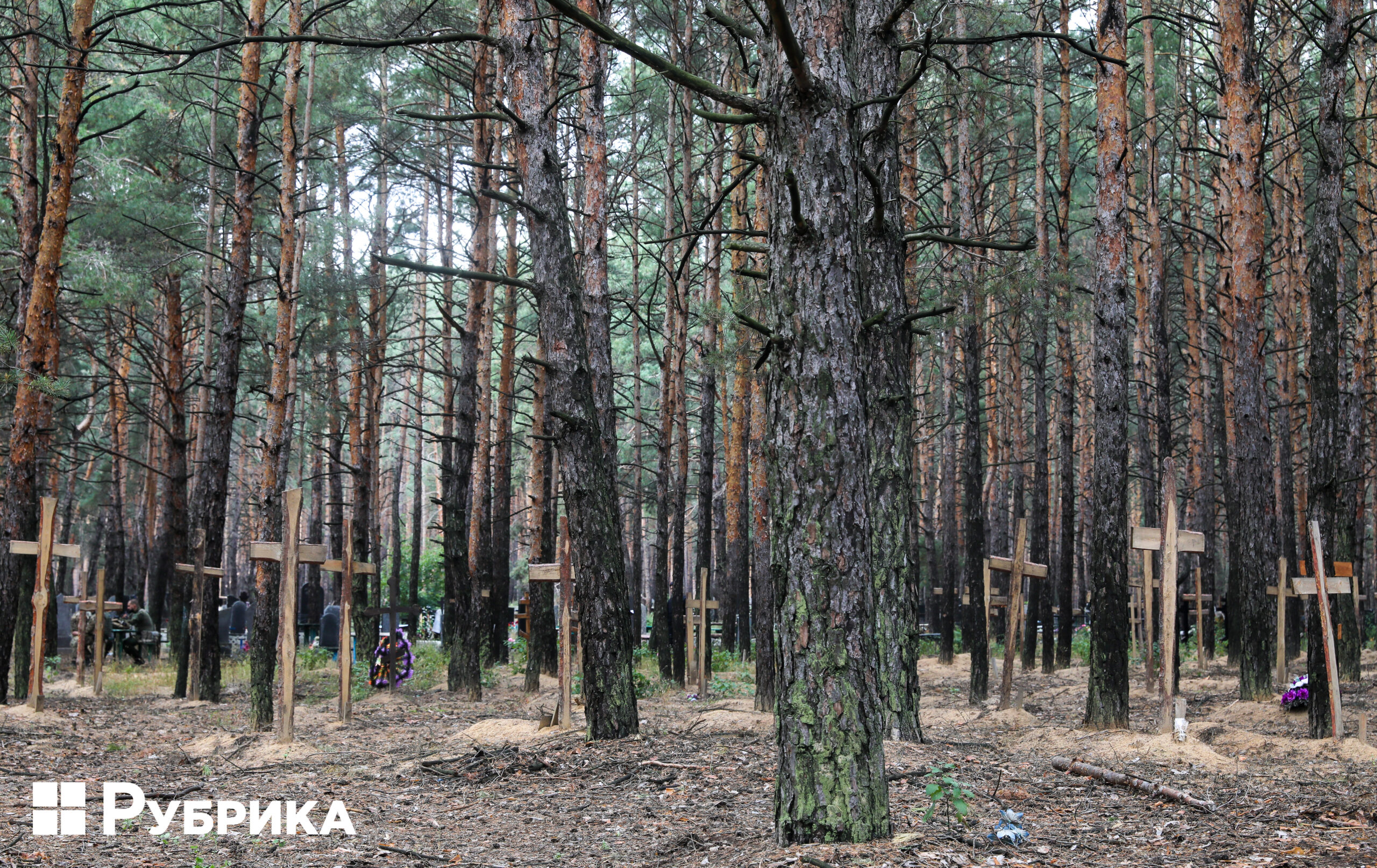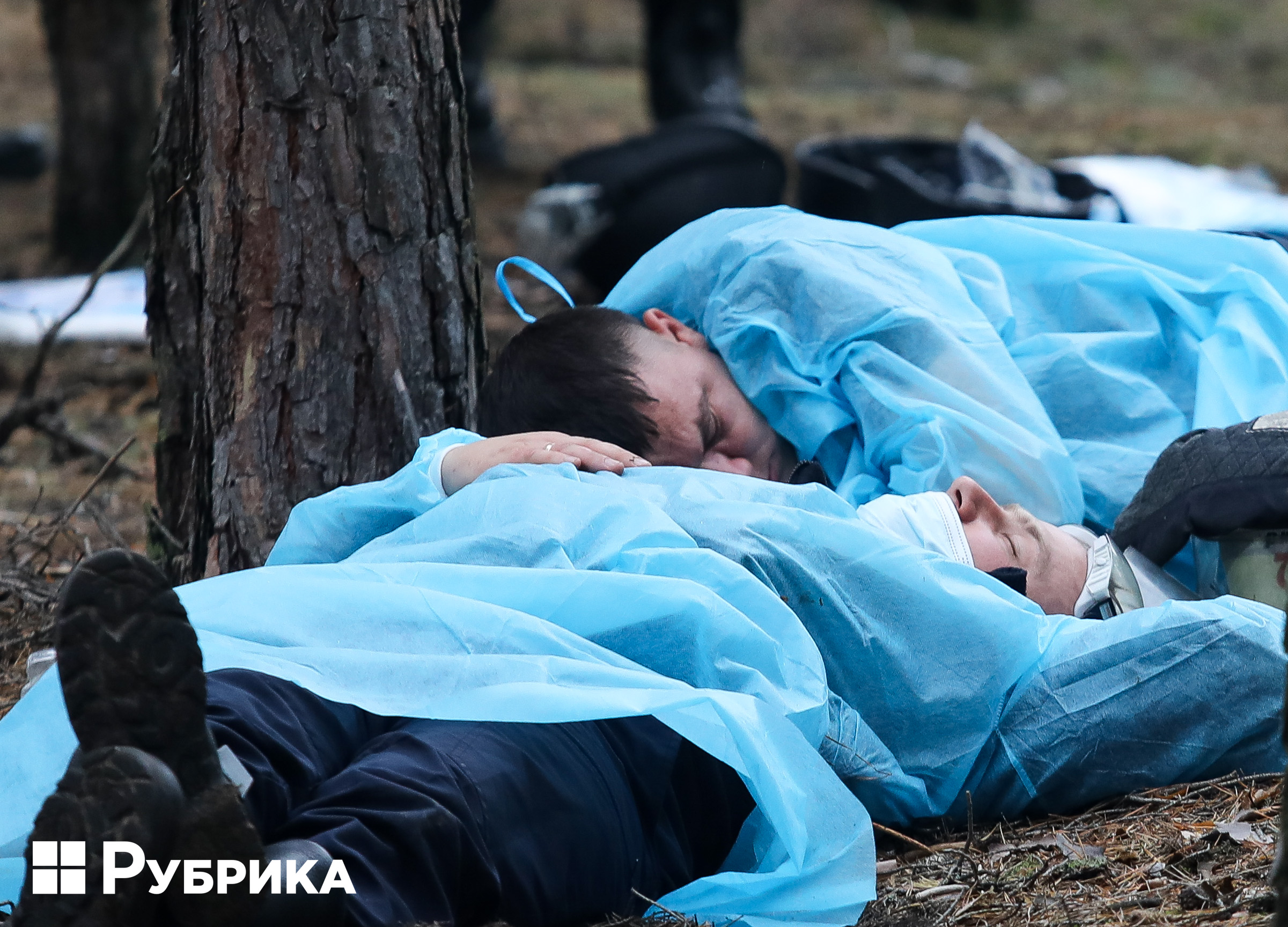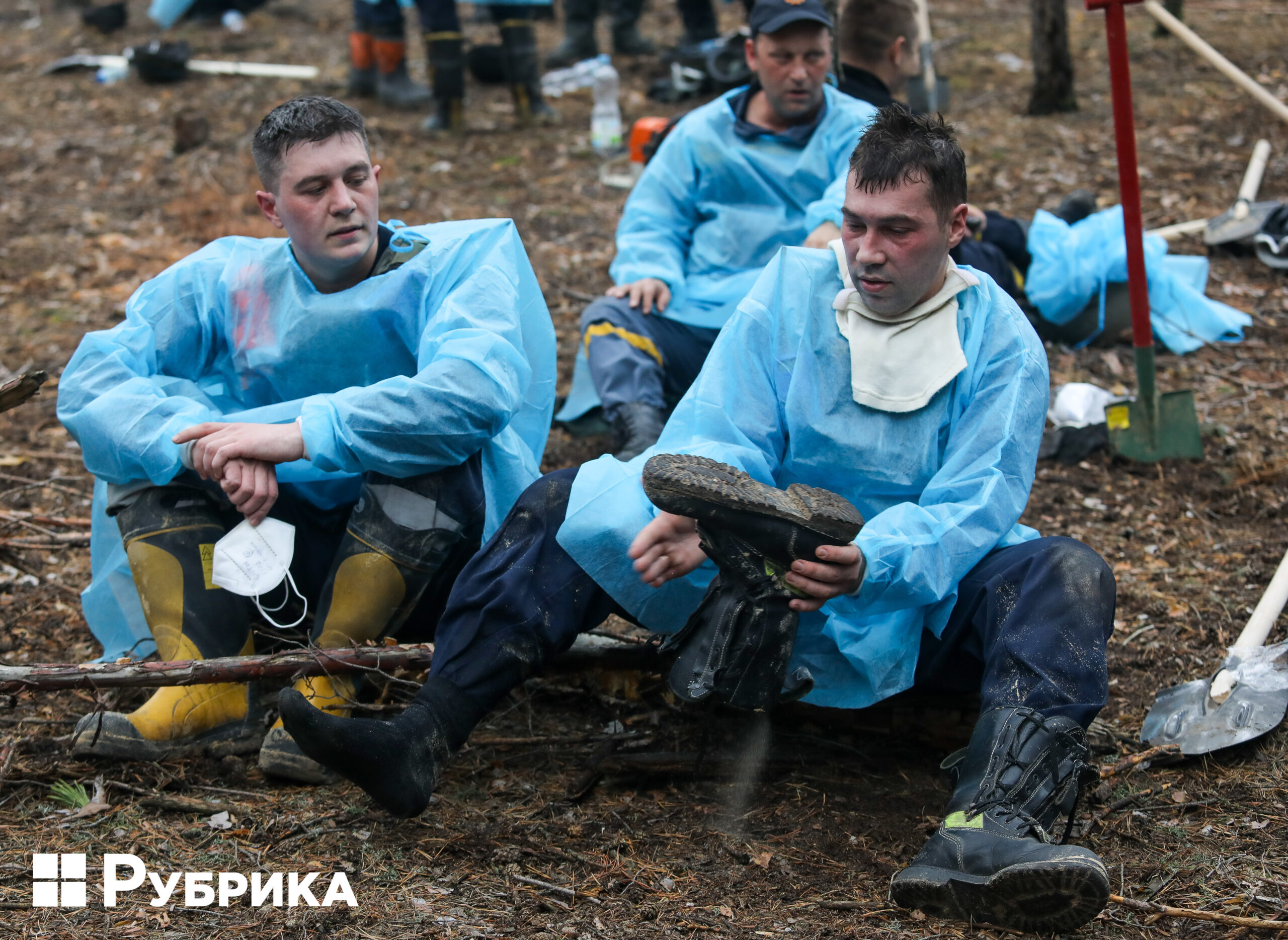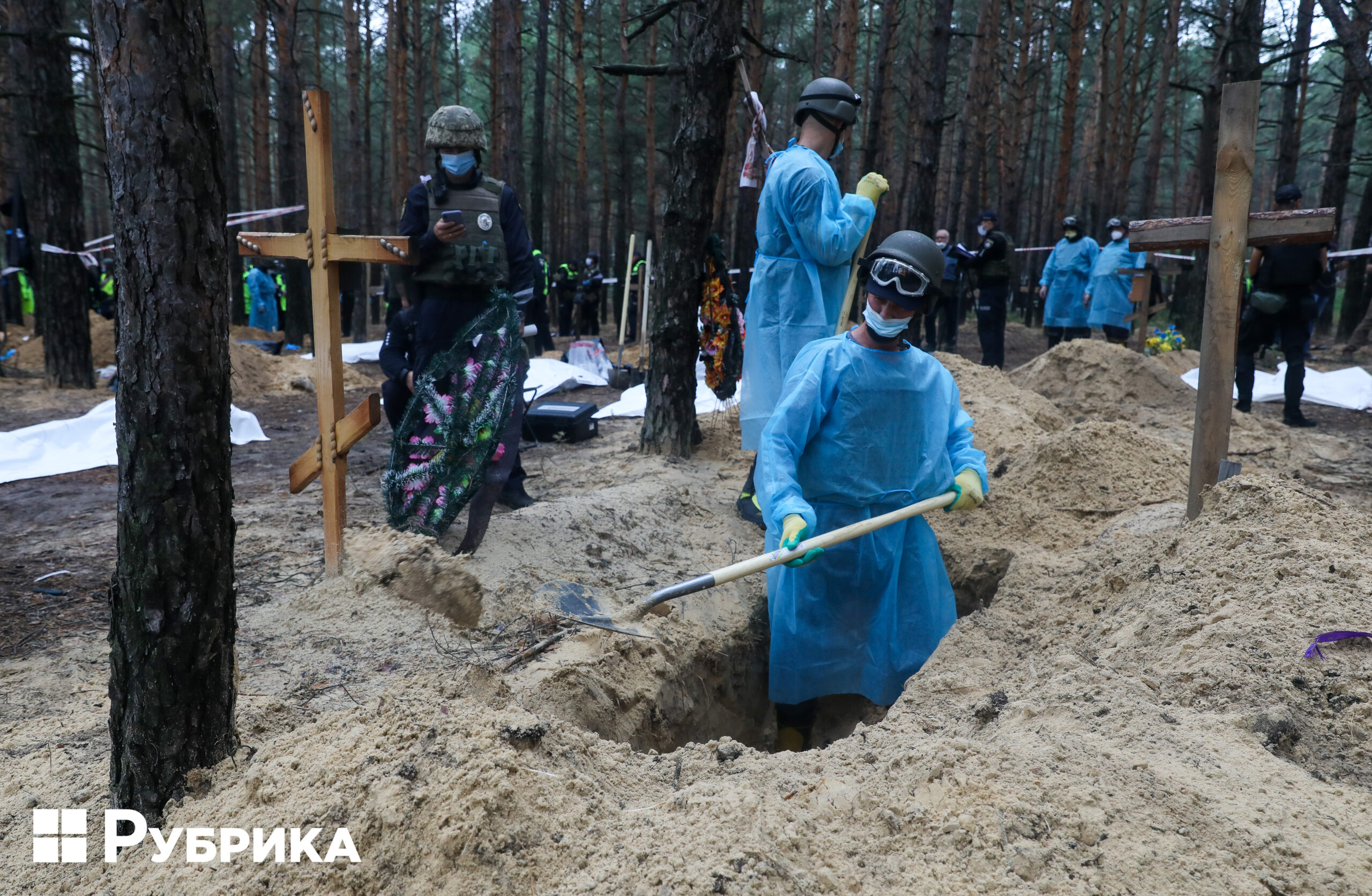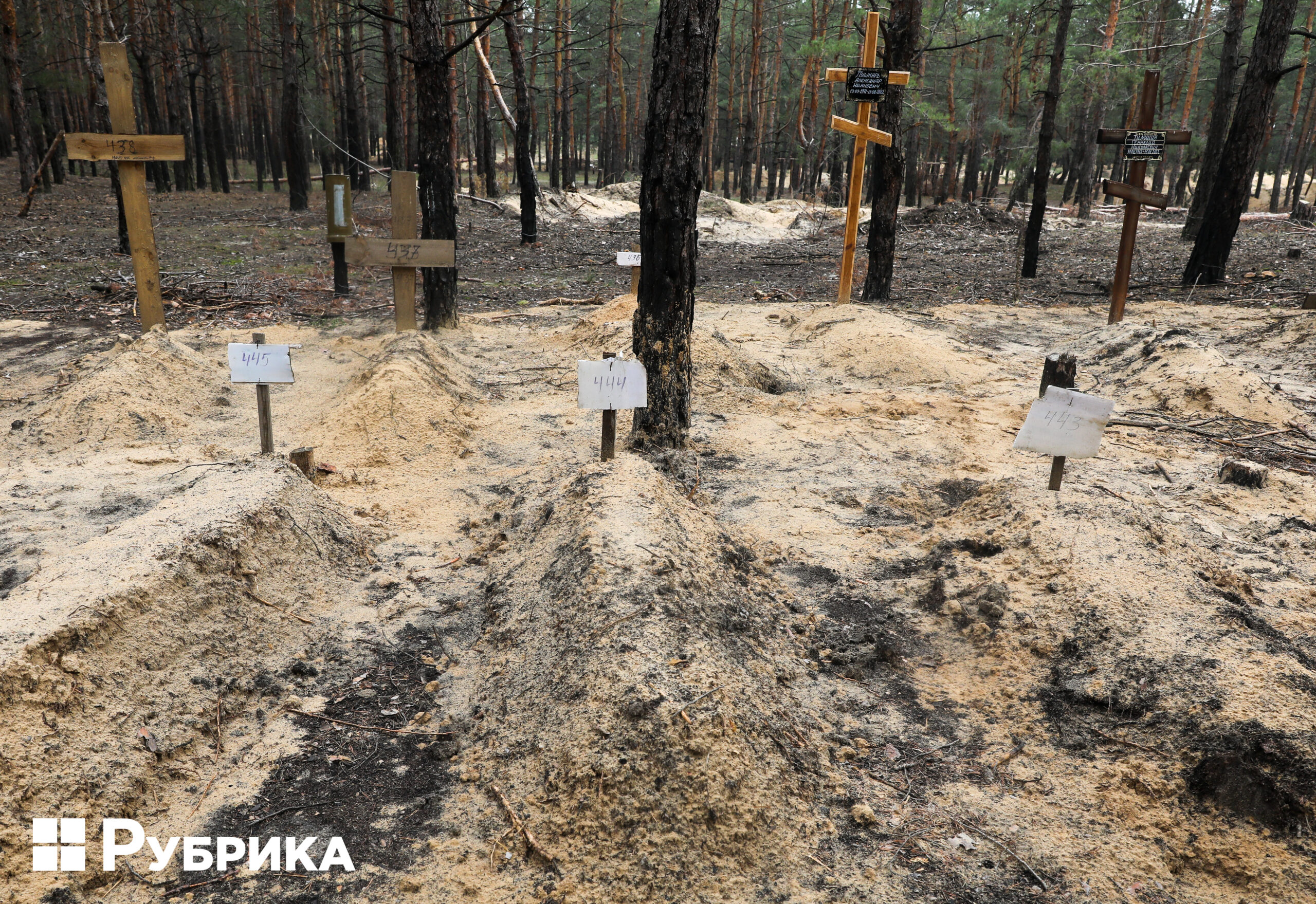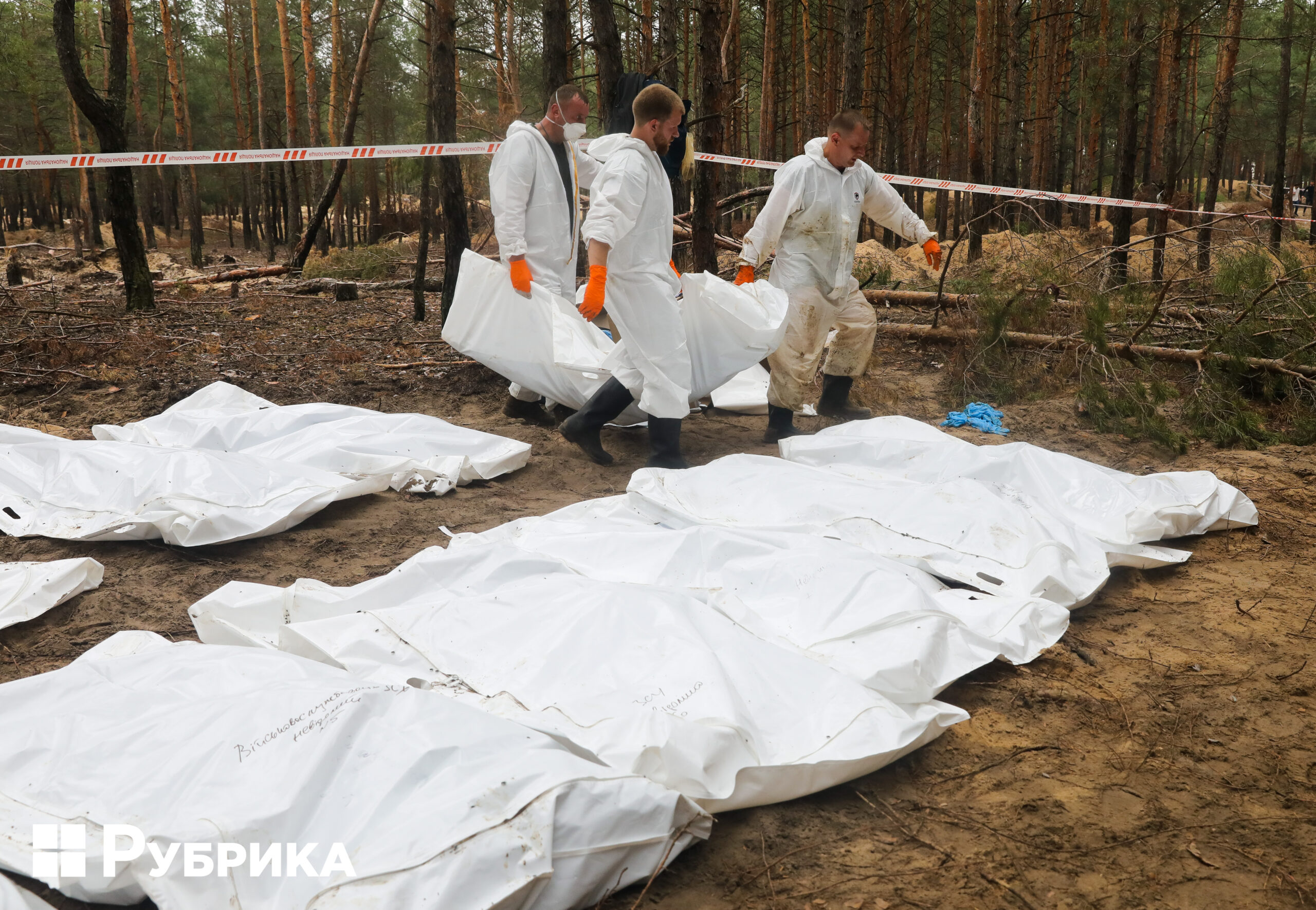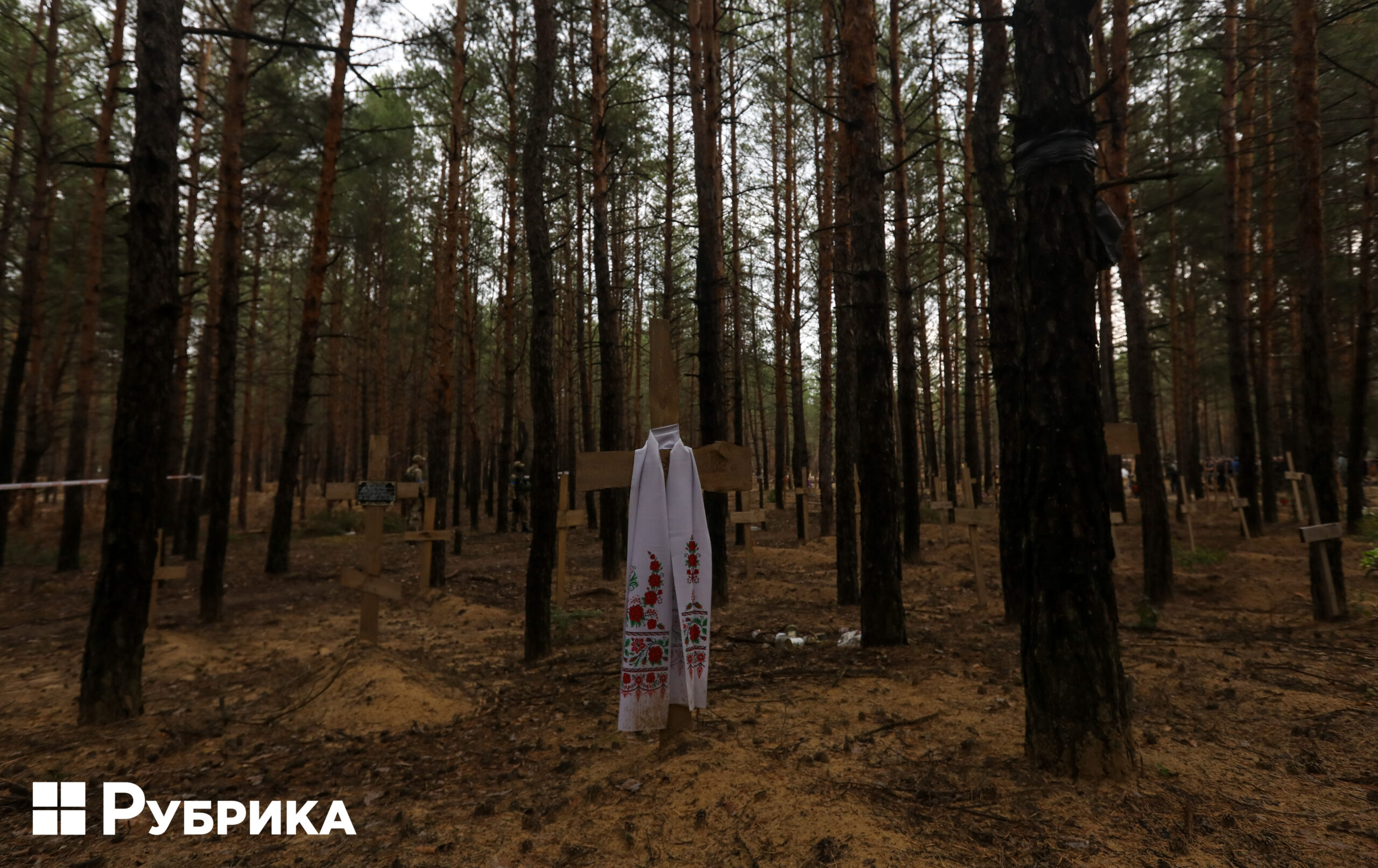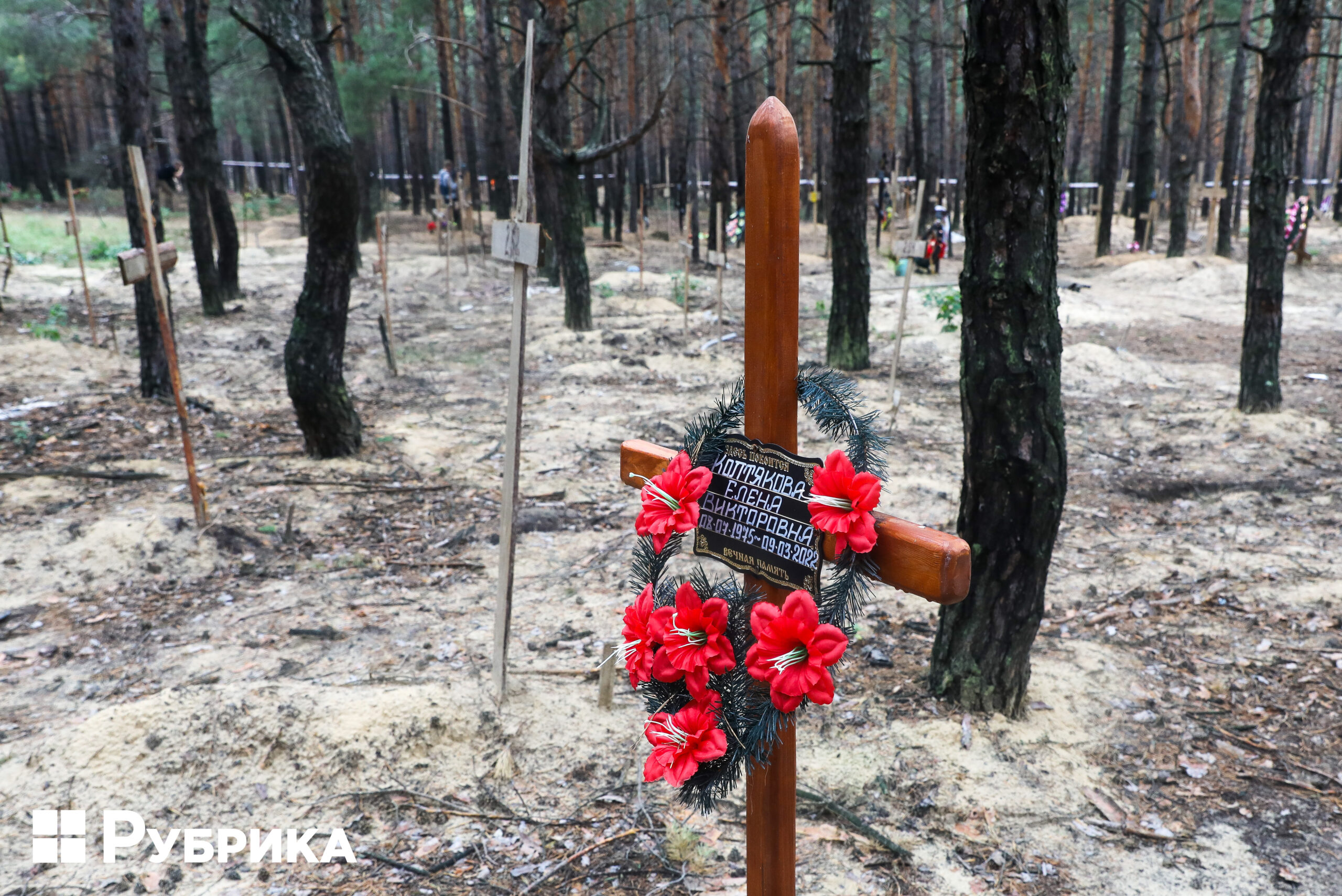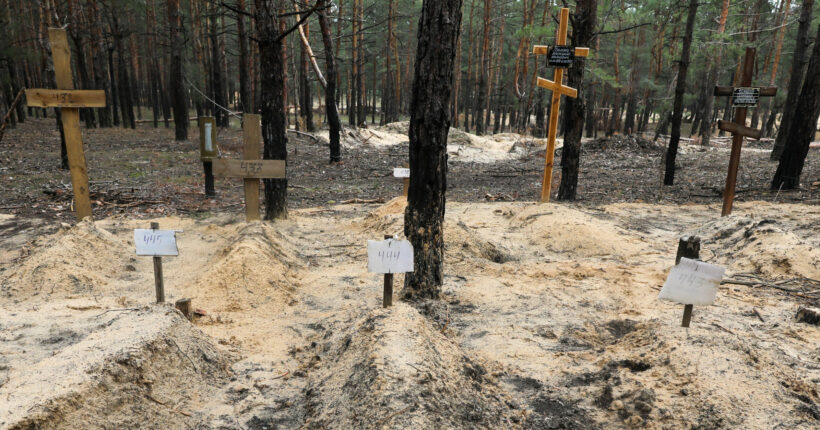
Photo: Rubryka
A torture chamber—this is what russian-occupied Izium has become for Ukrainians since March. Last week, the city was liberated by Ukrainian forces, and now mass graves and the remains of tortured people—tortured for being Ukrainians on Ukrainian land—are being found there.
Caution, the article contains traumatic imagery. But the whole world should see these photos. It is the true face of russia.
Innocently killed and buried in a mined forest
Izium, outskirts of the city, Shakespeare Street. On one side, we see several dozen private houses and a mined forest on the other. Only a few families and single older women lived on this street throughout the occupation. On the other side of the road, russian troops were stationed in the forest. Because of this, the forest is now wholly dug in with shelters for tanks and infantry.
Immediately behind the trenches is a cemetery. On its outskirts, many new graves have appeared during these months. 445—445 crosses for 445 locals who died at the hands of the russians. This is an enormous number for a city with a population of about 48,000, given that many residents were able to evacuate.
The residents of Shakespeare Street were aware of the new part of the cemetery, but it was extremely dangerous to even leave the house during the occupation. Hence, they only guessed how many people had been buried there since the beginning of April. According to Liudmila, who lives opposite the cemetery, she and her husband had a radio receiver. So they knew what was happening in Ukraine and what happened in Bucha and Irpin. Liudmila says they understood that the same or even greater tragedy could happen in their city.
On September 16, exhumation began at the cemetery. It is a long and complicated procedure where all norms must be observed. So among the graves are criminologists, police officers, and prosecutors; they document the crimes of the russians. And there are approximately a hundred journalists because the world needs to know the truth about what the russians are doing in the occupied territories and what happens to people who weren't lucky enough to live in the city which the russian army occupied.
Several dozen soldiers, dressed in protective suits, dig up the graves.
Most graves do not have nameplates, only a serial number.
In addition to journalists, there are also several local people.
One of them, Hryhorii, says:
"My wife, Liuda, died early in the morning of March 7. Due to the terrible shelling, we spent the night in the basement and left it earlier, at six o'clock. We got out and saw the whole garden was on fire, and the neighboring house was destroyed. The place where there was a large store, five stories high, was all on fire. All the neighbors came out and looked at all this horror. And suddenly, another raid. And… my wife died.
First, I buried her in our garden, and then I found the funeral pyre, a cross, and the necessary ritual items to bury her humanely. I paid 4,000 hryvnias. I did everything right and buried her in the old part of the cemetery, not in this one. She was a woman with a golden heart. We lived together for seven years."
Nearby, the police are talking to the man responsible for burials at the cemetery. Nearby is one of the undertakers, Dmytro. He talks about how burials took place during the occupation:
"People were brought to us: we recorded those who had documents, those who didn't were recorded as unknown. We used to work in private funeral services, but now we work here so that these people don't stay in the city but are buried. We have two brigades, four people each, working in turns. At the beginning of the occupation, many dead people were brought in. Locals approached us with a request for help with burials, and we helped them. We dug pits here, and the dead were brought to us. We also buried our dead from the territorial defense."
In the first exhumed dozen, criminologists find a person with traces of a noose around his neck. Based on the date-of-death plaques on some of the crosses and conversations with locals, we find out that some of the buried are people who died because of a lack of medicine or because they couldn't get the medical care they regularly received in their peaceful lives, and the one that became necessary under the conditions of the war.
An examination will determine the exact number of those killed by shelling and torture. Today, it is known that 53 people died in the basement of a residential building, which was used as a shelter from shelling.
33-year-old Serhii Shtanko lived in a building at 2 Pervomaiska Street. He worked as a programmer. And then his life was destroyed by the russians and the house where he lived.
"My nine-story building collapsed on March 9, and I was at home. The house started burning, and I pulled out my mother, then a neighbor who collapsed. We saved whoever we could pull out, and the other residents died instantly. When the rescuers began removing the corpses, my mother, neighbor, and I recognized them. Then a car picked them up and took them to the cemetery.
When it was cold, we lived in a neighbor's country house, then returned to the building to the surviving neighboring apartment; I sealed the windows there.
From our house, 30 or 35 people died in that basement. The total number of identified ones is 46. Unidentified ones are seven. In total, 53. These are all people who were then in our building's basement.
I feel nothing right now. All the tears came out, all the nerves went away," says the man.



